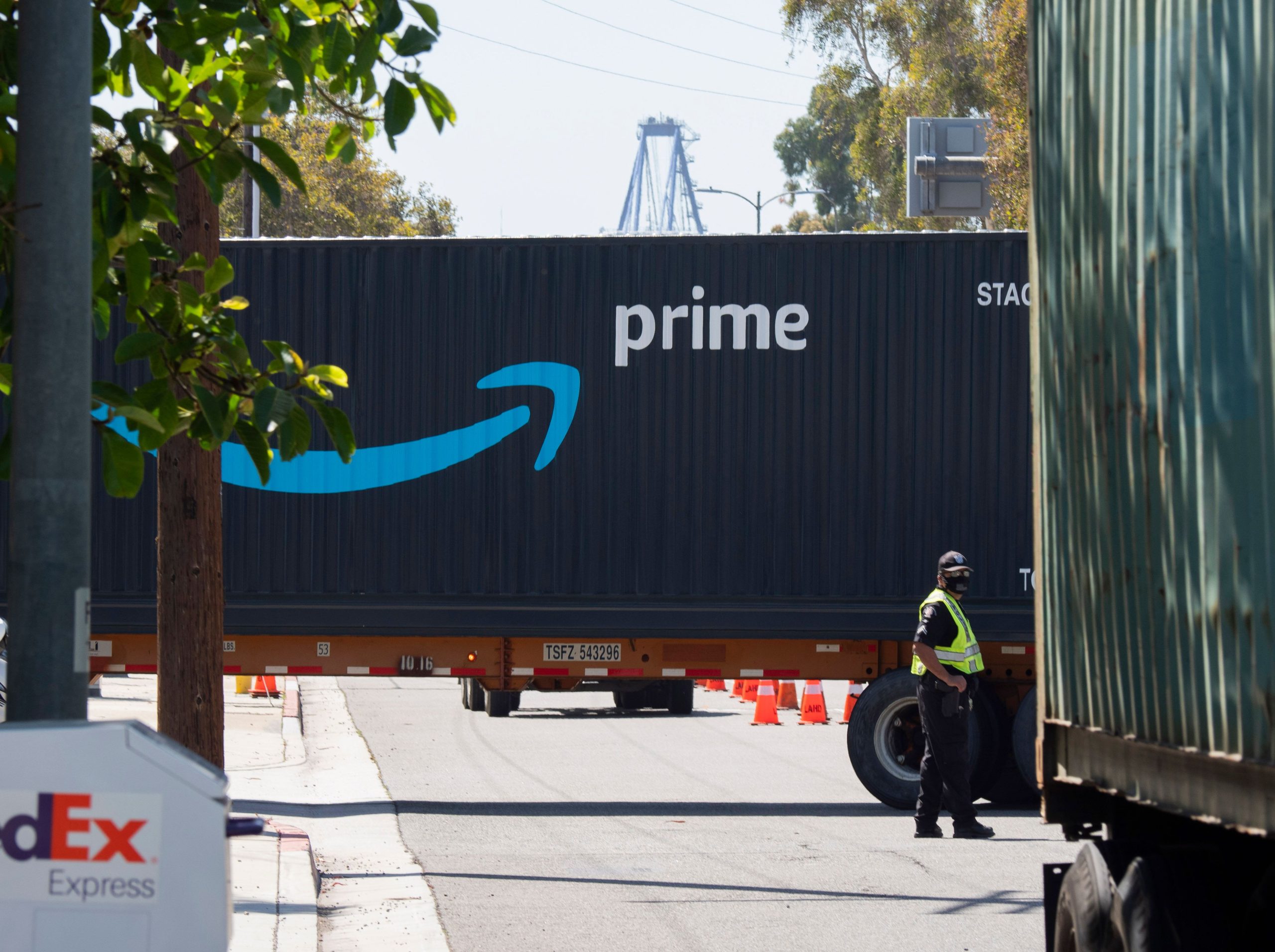The trucks that move goods sold by Amazon and other e-commerce retailers have become a growing source of diesel pollution across the US, and few places are feeling the effects as acutely as Southern California. Now, the region is pushing back with a new air pollution rule aimed at slashing noxious emissions from warehouse trucks. The rule could serve as a template for other areas.
As e-commerce has grown in recent years—and surged during the pandemic—retailers have been building warehouses at a breakneck pace. Amazon, for example, plans to expand the square footage of its fulfillment centers in the US by 50 percent this year. Each new or expanded warehouse requires more trucks both to stock its shelves and to distribute its orders.
Though the warehouses serve customers scattered throughout the region, pollution is heaviest on the streets around the warehouse, and the people living nearby suffer most acutely. Diesel pollution from heavy trucks causes everything from asthma to heart attacks, and even Parkinson’s disease. Previously, such pollution tended to be concentrated around shipping ports and highways, but the growth of e-commerce has created a new source that is affecting neighborhoods farther inland.
“Where we live, these warehouses are popping up like Starbucks,” Ivette Torres of the People’s Collective for Environmental Justice, a local nonprofit, told The New York Times.
There are nearly 34,000 warehouses enclosing 1.17 billion square feet of space in the Los Angeles region alone. The rule, which was adopted late last week by a 9-4 vote of the South Coast Air Quality Management District (AQMD), would cover around 3,300 warehouses that are larger than 100,000 square feet. The rule seeks to reduce the amount of diesel particulate matter and nitrogen oxides produced by trucks serving these facilities. The district covers more than 17 million people, or nearly half the state’s population.
When it comes to air pollution, Southern California is often at the leading edge, for better or worse. The region’s high population means that trends that could impact air quality—like e-commerce shipping—are often experienced earlier than elsewhere. On top of that, when the air in Southern California is still, the mountains that ring the region’s air basin keep pollution concentrated in the area.
The intensity of air pollution in and around Los Angeles also means that the region tends to be at the forefront of pollution regulation. The way the South Coast AQMD is approaching warehouse-related pollution is novel. Rather than attempting to control traffic flow to and from the facilities, the regulator will require warehouse owners to take various steps to reduce pollution in the area. That could include buying electric or fuel-cell trucks, adding solar panels to the building roofs, or installing air filters at nearby homes, hospitals, and schools. Each of these measures is assigned a point value, and warehouse operators must achieve a certain total to offset the emissions from their truck traffic. If they cannot meet the goal through mitigation measures, they can pay a fee instead.
South Coast AQMD is phasing in compliance depending on the size of the facility. Warehouses that are over 250,000 square feet must meet their goals by June 30, 2022. Warehouses over 150,000 square feet must comply by the same day the following year, and those over 100,000 square feet get until June 30, 2024. Amazon’s typical warehouses, for example, range in size from 600,000 to 1 million square feet.
Though the new rule will probably also reduce greenhouse gases, it’s intended to minimize the health effects of particulate matter and nitrogen oxides, both of which are present in diesel exhaust. Together, the two pollutants are responsible for various respiratory ailments, including asthma and chronic bronchitis, which frequently keep affected children home from school. While nitrogen oxides have been targeted for regulation for decades, particulate matter has come under increased scrutiny in recent years. It has been linked to everything from cardiovascular disease and heart attacks to Parkinson’s and kidney failure. Breathing in low concentrations of the smallest particulates, known as PM2.5, is associated with increased mortality, even if exposure lasts just a couple of days and even if the amount is well under EPA limits.
The new rule is expected to save 150 to 300 lives and prevent 2,500 to 5,800 asthma attacks between 2022 and 2031. Overall, the public health benefits could be as large as $2.7 billion over the same timeframe.


